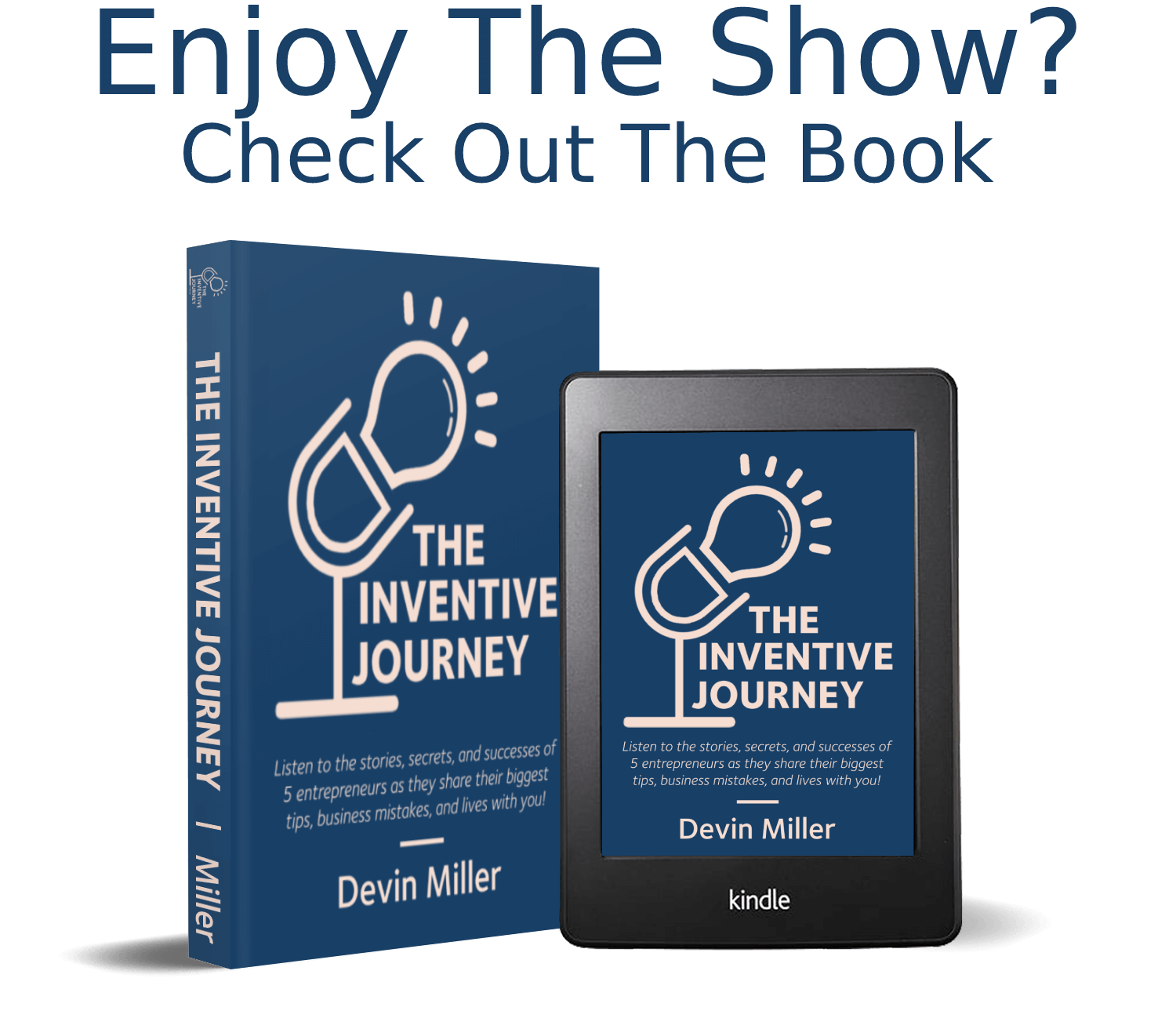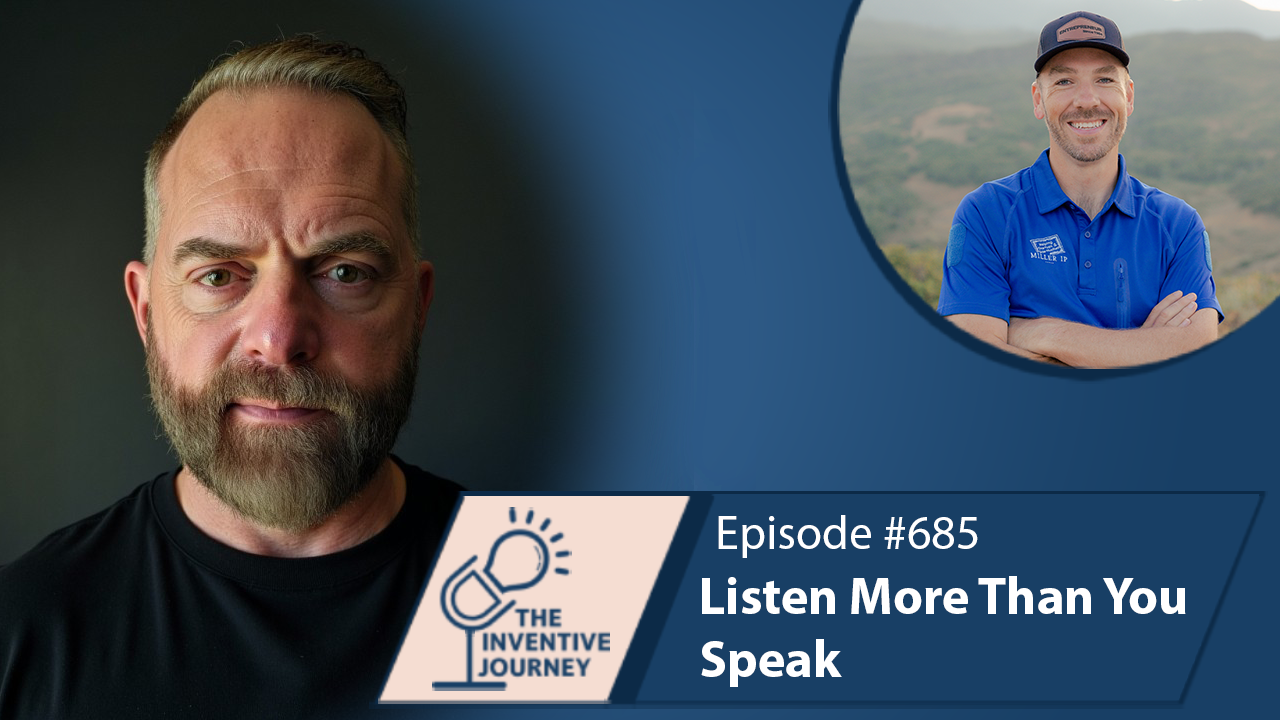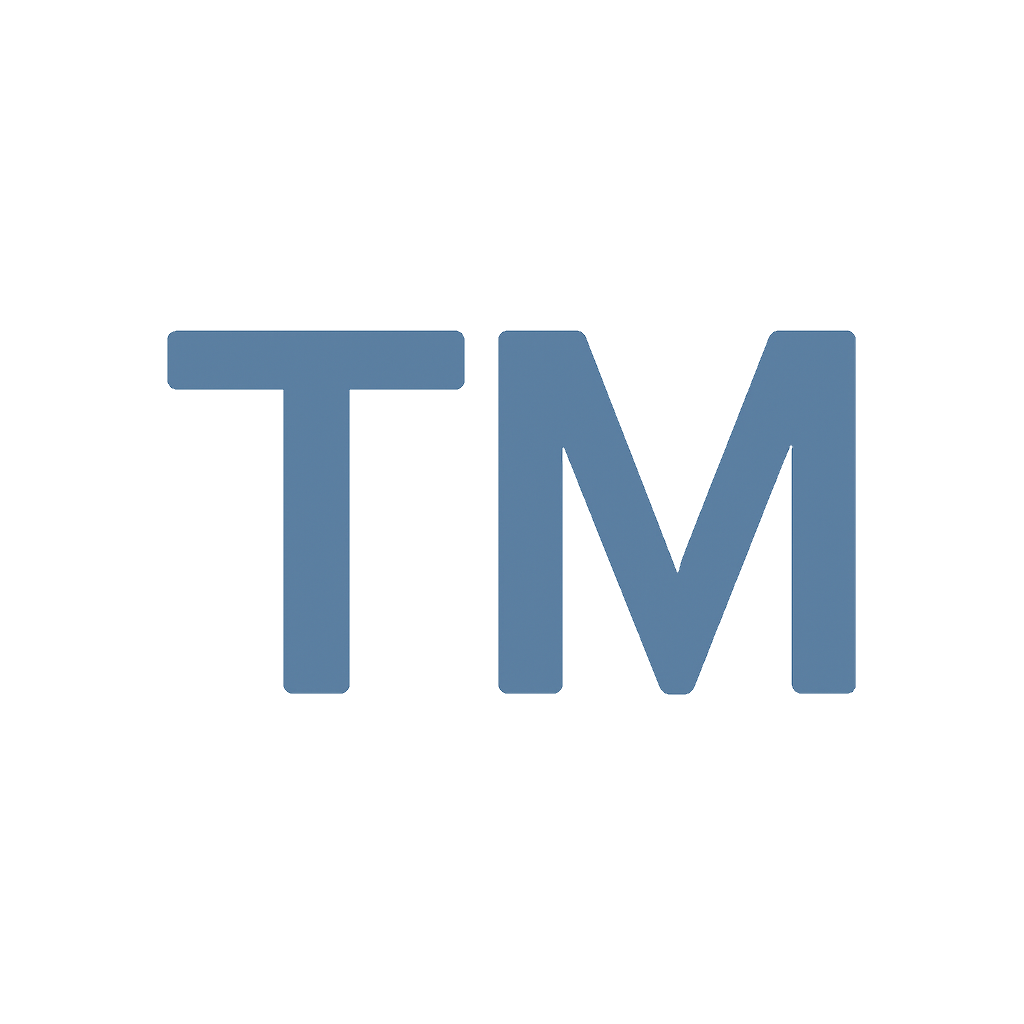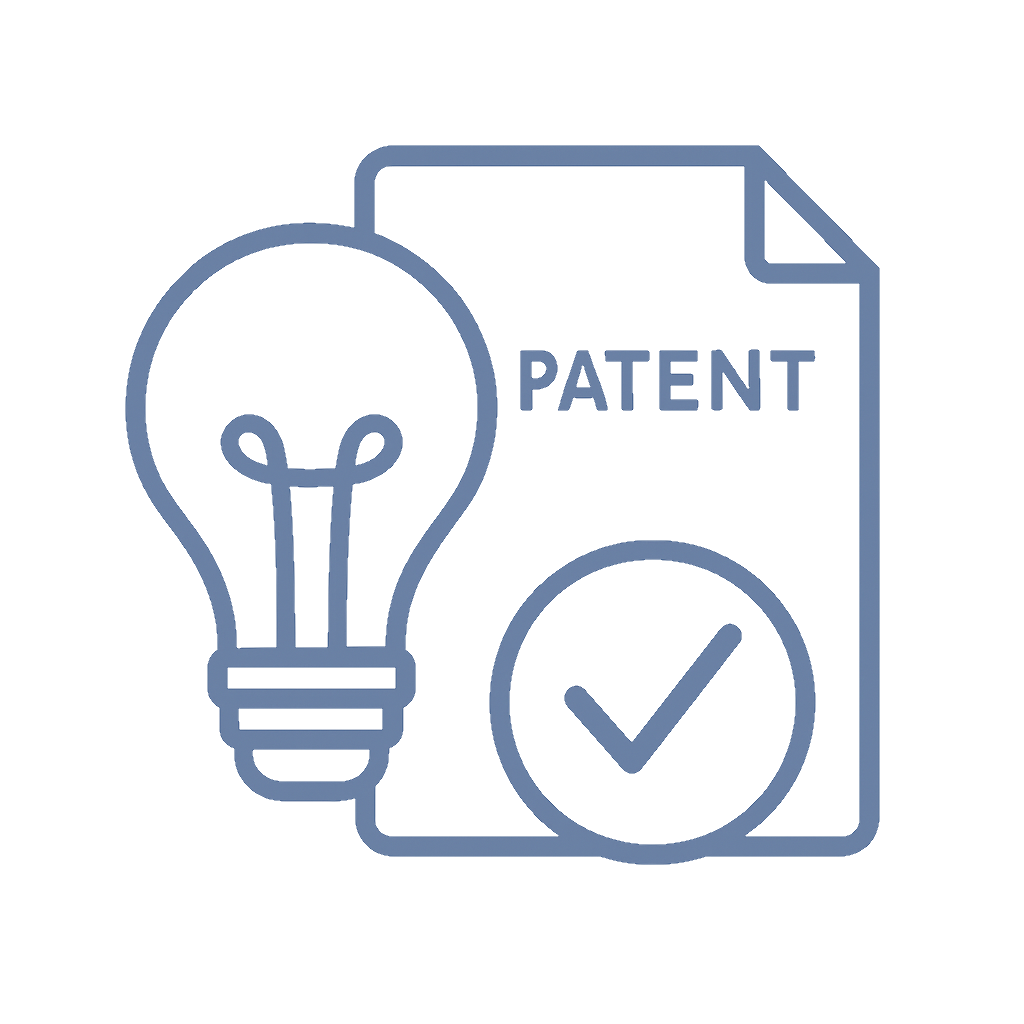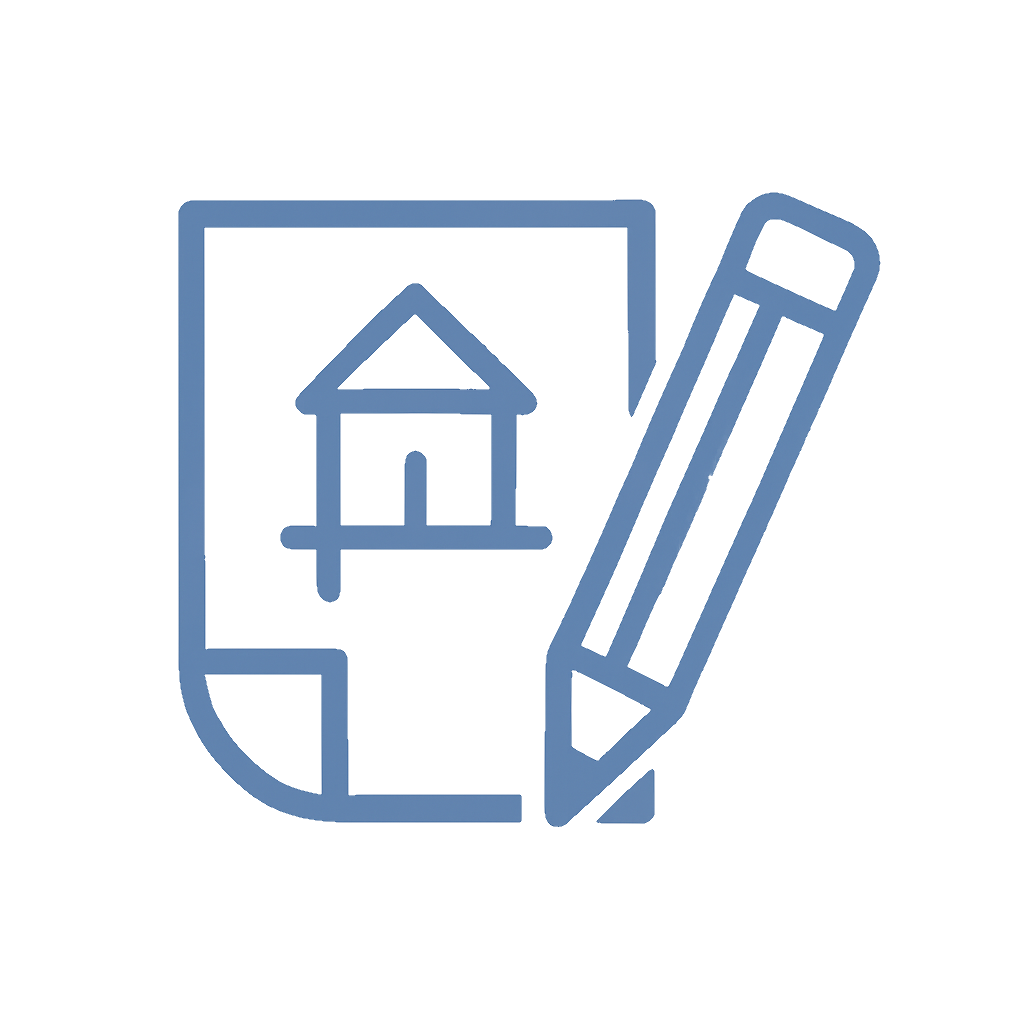Invest In Your Equity
James Regenor
Devin Miller
The Inventive Journey Podcast for Entrepreneurs12/20/2021
Invest In Your Equity
The Inventive Journey
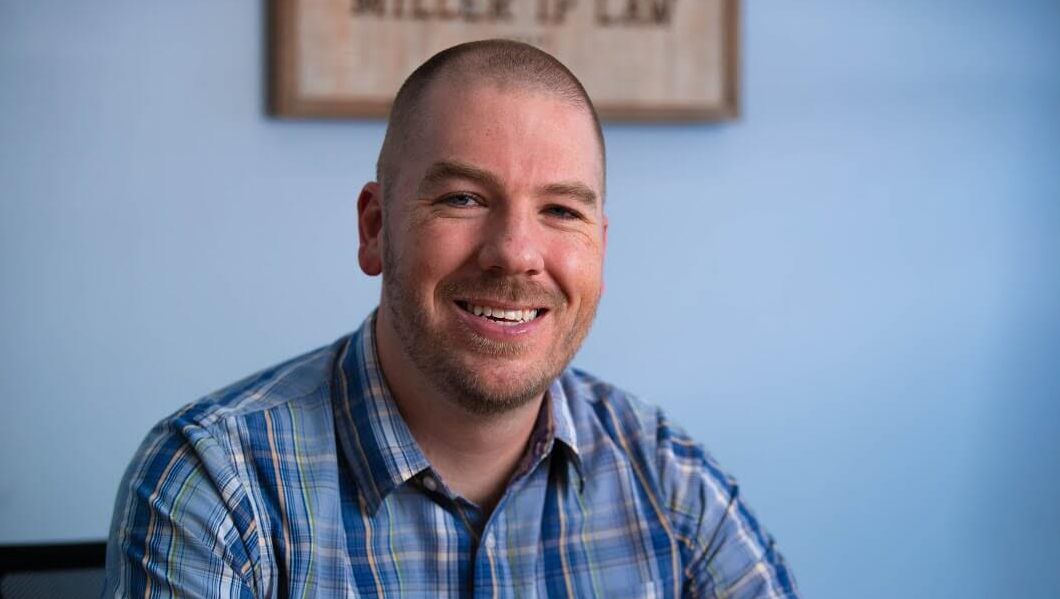
Starting and growing a business is a journey. On The Inventive Journey, your host, Devin Miller walks with startups along their different journeys startups take to success (or failure). You also get to hear from featured guests, such as venture firms and angel investors, that provide insight on the paths to a successful inventive journey.
Get New Episodes
Get 2 brand-new podcast episodes sent to you every week!
ai generated transcription
for all the early people you bring on or co-founders or whatever vest into your equity invest into your position um because you're getting married to somebody in some cases you might not know the person very well and maybe you have a differing opinions or something three four six eight ten months a year into it or a different direction you want to go or pivot you don't want to make there um so if you don't vest into your equity it it makes getting a a kind of a divorce very difficult um so if you know if you and i are entering into a business devin i said hey we're just going to split the equity 50 50 right from the get go and then we get to a point where we decide we want to go different direction now i've got to deal with you you have 50 of the equity i have 50 in equity as opposed to if we were on a investing schedule where you know every year we're investing 10 until we got to what it was and we decided to part um you know we would have some sort of uh some sort of recourse to not have to give up half the company or not have to buy after family or whatever it is [Music] hey everyone this is devin miller here with another episode of the inventive journey i'm your host evan miller the serial entrepreneur that's grown several startups and uh seven and eight figure businesses as well as a founder and ceo of miller ip law where we help start us in small businesses with their patents and trademarks if you ever need help with yours just go to strategymeeting.com grab some time with us to chat we're always here to help now today we have another great uh guest on the podcast james uh regener by and i'm worried i'm going to mispronounce his last name so hopefully i was close but uh james uh left high school as a junior and or after the junior year and went into the air force and went into the air force academy and got a degree was in the air force for i think about 30 years and then retired and went to work for a supplier for a while um within the some of the kind of governmental agencies and then uh got into 3d printing business as well from uh and did that for a period of time i started creating digital assets and then went on his own for uh for a few years and then when did another startup covet hit pivoted to ventilation systems and then after coven shifted back into the aerospace industry as well as i'm doing some things with aircraft so with that much as an introduction welcome on the podcast james well i appreciate you uh appreciate the opportunity to be here devon and i look forward to uh to our discourse today uh that was that was it was a generous introduction so uh and it happened all about that fast so that's awesome so thank you awesome well i'm hopefully not quite as fast otherwise your whole life has been about 30 seconds so maybe with that as we dive in so i just packed a much longer journey into the 30-second version but why do you unpack that a bit and kind of tell us how you know life started as you're wrapping up high school and getting into the air force yeah awesome so uh so like everybody uh you know back in the early 80s uh rolling out of the uh carter years and ronald reagan uh years coming up i was excited about kind of what the new world's going to look like and was looking for an adventure i was also ready to start my life as much as odd as that sounds but at that point i wanted to just get on get moving forward and i worked at a grocery store and every night a air force recruiter come in his name was tech sergeant chuck tache and i would say hey i want to go in the air force he'd say hey come see me when you finish high school i'd say hey i want to go to the air force and we went back and forth finally i said dude i'm going so i went down to his office and signed up for the asvab test i scored really well on it he said i'm going to take a risk and let you go into open general which normally you didn't do you wanted to have a some sort of committed job i took the risk and it worked out well for me and from there i was able to move forward as an enlisted person in the air force and then from there get accepted in the air force academy then my time there went off to fly jets uh really had a great opportunity in the air force 149 countries all 50 states uh i managed to visit um but uh some great things happened in there one of them i worked at one point i worked at kennedy's think tank called checkmate which is a deep strategy cell another staff simon i actually went to work at the white house i was the deputy executive secretary in the executive office of president for the national security council i was hired by george w bush so 43 i was the senior member to stay for the transition to obama i stayed the first six months and then from there i went out and led a large logistics organization 15 locations 11 countries across three continents doing about 65 000 maintenance touches moving uh 2 million people 570 000 short tons a year so really uh out of that kind of drove my innovation i was always starving for spare parts when i left the air force you know i said there's got to be a better way to figure this out there's got to be a better way to get spare parts out to places like minas kyrgyzstan or balad or bagram or some of these bases we're at where we'd have airplanes get broken and have to repair them i went to work at moog which is an aerospace level jump in really quick in this so because it sounds like you know see it ended up working i think with the air force for 30 years is that right yeah 31 years yep so yeah tonight that you know that's a pretty good period time both as far as or the amount of time you stay at the air force as well as that's you know a lot of times a fairly full career and so as you're coming out you know and retiring so to speak from the air force it's the intent hey i'm going to take a break relax catch my breath and otherwise have fun or just saying hey i'm on to my next thing and here's my next opportunity so it's kind of weird so i um metaphysically so i ended up in buffalo let me just go walk backwards a little bit so when i went into the the air force i grew up in erie pennsylvania and when you enter any of the services you would go to a mep station which is how you enter a service you get sworn in and they should be off the base train it happened to be in buffalo new york for erie so when i finished um i had offers from a couple different companies one of them was here in buffalo new york it's about 80 miles from my home uh erie pennsylvania is fairly depressed right now so uh you know there's not a lot happening there um but coming back to buffalo which is where the headquarters was promote kind of closed that first loop metaphysically allowed me to start the next kind of the next loop and i wanted to do that with as much as much vigor and get as much success out of it as i could but a tension exists between time responsibility and money so when you retire you have to figure out where you want to play in that you know if you want to take on a lot of responsibility it's going to cost you a lot of time most likely you'll make a lot of money if you want a lot of time you need a job with less responsibility chances are you make less money so so you have to figure out where you're fitting there i i just jumped in the pool i got hired an executive and uh thrown into the sharks right away working in the military after market for this company which was an area i was familiar with um and able to leverage my rolodex but uh it was uh i ended up leaving there three years later because i was just running other executives right so it was i wasn't able to really expand um you know kind of the left side of my brain which is something i was eager to do um but when we acquired when moog acquired a 3d print business i said hey let me take a look at 3d printing it's going to be commoditized but let me look at what the future looks like in this digital world i'll pause there and we can unpack that as we go but uh i got a little sidetrack sorry oh you're good so now you're coming out of the you're coming out of the the air force you've done that for a period of time say okay retirement you know do i want to do it going on sounds like you know kind of said hey given the balances of those various factors i'd like to continue to work and you went into being a working as a for a business that does supplies for a period of time now as you're doing that business i think you also started to get into 3d printing is that right and kind of maybe started as a bit of a side hustle or hobby and that and then it kind of evolved into being more of an actual business is that about right uh no actually so so the 3d printing was acquired by mo becoming i worked at i said let me let me bring that into my portfolio and start to look at it the idea was to put a 3d printer in the middle of a depo when these military depots and kind of create a fox and then in the hen house type environment where work would come to us because we had a capability there um we offered to give a printer to the government million dollar printer to the government they're like we can't we don't know how to accept three things so uh you know it was it was a little convoluted but but now that um you know i did a lot of scenario-based planning we developed a couple scenarios that really drove me to where i'm at today and i'll just share that scenario with you but you're on an aircraft carrier you're in the indian ocean you have an f-18 that has to fly critical mission lines are at stake it needs a part you have a 3-d printer how can you set apart directly from the part manufacturer out to the aircraft carrier so that it can be printed and put on the jet and standing on the aircraft carrier looking backwards which is kind of how we do the scenario-based planning we accept the fact that what we're asking ourselves is possible and i'll dive in that a little bit more but what we found was there were some gaps in there and really the gaps were around trust how do you trust that nobody corrupted your data your enemy didn't come in and corrupt that digital data and that the processes that were required to be followed for the parts of the air where they were actually followed um and from there we started to look for what trust solutions now mind you this is november 2015 crypto was just starting to become kind of a bitcoin crypto was just starting to become kind of a buzz and i had a colleague come back from mit and said hey look have you thought about blockchain and blockchain being the foundation of cryptocurrency we said no we hadn't we didn't know much about it um i dove into it real quick and said this is a really elegant solution for this problem it allows us to to establish trust outside the four walls of a factory which was significant so once you unmoor it from the cryptocurrency craze there's actually quite a few tools there that are beneficial in the industrial world so that's right so no that makes sense so now you're saying okay both on the crypto side on the this the 3d printing site in general there's a business case we've made there as well as digital assets and kind of giving getting into that you know if it sounds like it started a bit with the business you're working on and the opportunity you had i think at one point or at some point along the way you transitioned to doing it as you're kind of your own business or your full-time or full-time endeavor is that right yeah so you know once we married those two things up the 3d print build file and block in providence to create digital assets we said hey this is interesting we actually created a new form of a new new modality of logistics if you would you could now send things digitally to the point of use to manufacture the time of need so no longer do you have to ship by airland or c which are the traditional modalities of logistics and we also created a new type of commerce and i won't say created we we took a type of congress uh commerce that was very popular in the b2c world and made it a b2b so for example that's digital karma so you consume music video apps on your phone right so consumers are consuming digital commerce every day but now to make an industrial application where i can sell a digital file to somebody and allow them to then printed at the point of use um you know that upsets the whole apple cart right we're able to take lead times that were 265 days and reduce them down to six hours and that's from order to full production and another case we did a real-time use case where we had a flight launch from ucla new zealand and ruto los angeles they had a cabin park that filled um that would have rendered one of their business premier seats um unoccupiable for three legs they would have lost thousands of dollars of revenue um we succeeded at a digital part in singapore they purchased it i was on prem in la printed the part out of a suitcase that i had with a printer they did the quality inspections with a clean land they put it on it but all of a sudden everybody goes holy smokes we can do this we can create these digital supply chains we don't have to maintain these inventories and so on um it really became an exciting venture so i left at that point and said i'm gonna go out and evangelize i spent about a year and a half going to all the shows uh traveling the world actually evangelizing this digital supply chain solution in a company called blockchain resources group and then in 2019 august 2019 i said i'm ready to practice this i went back to the company where i invented the uh intellectual property moog and said hey i want to get these patents that i uh co-invented a license for that and the other ip because you're not using it so we swapped equity for a license and we set out on a our company called veritex and we got our first government contract very quickly and then we ended up in a program called techstars that was sponsored uh by the air force it's the large accelerator with different sponsors this one was air force and then the pandemic crashed down on us so but uh that's how we that's how we got to where we were so morgan is still a great partner um they own about nine percent equity in the company they're also a tier one aerospace supplier so it's rare that you have a startup that's got it you know kind of a big brother that's helping shepherd him through but that's how it was no and that definitely made sense and sounds like it was an interesting and fun part of the journey now one thing you just hit on towards the end there was that you know as you're getting into coped things started to slow down or shift or otherwise necessitate a pivot or an adjustment and i think that's where you got into a bit of the the ventilation systems and doing that for a period of time to address the knee during covert is that right yeah so uh we were up in boston uh at uh state street building on one lincoln beautiful place and for tech stars they said hey look we're gonna go virtual there's a huge outbreak in boston at the time that was one of the first big super spread events which was actually part was in our building and part was on the streets so uh in fact my son was part of the company had to go the hospital he had a bad respiratory illness chances are it was probably that um but we packed up the car we're driving home and i said you know this pandemic and i had um i was doing these little just blurbs putting out on youtube and for the about six weeks before i was talking about the pandemic saying hey this is going to be a big deal it's going to impact the supply and so on and sure enough that's what happened so in that car ride home i said look we should open our aperture we've always been after aerospace medical and industrial applications where there's a you know high consequence of failure that's kind of our sweet spot so i said let's open the aperture let's get into medical right now but i didn't want to risk the whole company out so we stood up another entity so that day driving home and said we're gonna stand up another company we're gonna look at how we can support digital supply chains in the hospitals every hospital's got kind of a closet of misfit toys it's missing a knob a switch or something so they have equipment that's out of operation because they can't get parts to i said let's figure out what that looks like and let's kind of hunker down that night i went to sleep i had a dream about a new type of ventilation system now this will sound hokey to you but i'll give you the back story why it was in my head and why it came out this way and i woke up with an idea so i penned the idea real quick drew it out rough sketch um sent over to a engineering friend of mine said hey look can you make some engineering design or drawings on this and uh um i'm gonna patent this so very quickly called my attorney and said let's get some provisionals set up i set up a company called rabbit medical parts uh got that all together got the first round of designs um and then i went back to the dod who was you know this time we thought there's gonna be a huge ventilator you know problem in the u.s and globally i said look i got this idea it's based on a kc-135 which is type of airplane supply aerocycle machine it's going to be a high-performing low-cost ventilator like well we're interested um so we drew it up gave it to him uh we went from that idea dream to the dod dpa title three contract the same one tesla general motors and fork got in 12 days now when i was in the air force i didn't buy toilet paper in 12 days all right mind you start a business with absolutely no reputation um so so we did that um it was quite successful however there wasn't this huge problem that we had and the others that were making the ventilators of the day that were you know out there um you know they made enough production so there wasn't a need for what we're doing so we got all the way up to the fda uh what's called emergency use authorization steps and that's where the funding cut and they said look we like the idea they red teamed it they brought in a whole bunch of respiratory therapists and doctors they looked at what we did they said wow that's remarkable because we neck down what you know hundreds of parts down into the 40 parts manifold um using air off the air oxygen off the hospital wall at 50 psi going through a venturi pump to increase pressure volume and we're able to create a very wide operating envelope for this uh for this ventilator solution um and that's where we're at so we're waiting for the patents to come through on that we'll eventually take that ip we'll we'll produce the product and we'll do the approval and it'll be ideal for probably places like india and indonesia and you know asia and south americans because you know we can sell it for low dollars we've created a digital supply chain to support it all but about four parts in it are 3d printable and there's 40 parts total to include the six screws that hold it together you know so it's a pretty credible design uh pretty incredible machine when you think about it no sounds like it was a quick and a good pivot and a fun journey so now that kind of brings us up a bit to where you're at today you're gonna be looking out a bit into the future do you see things more as going back to a bit more of the you know military aircraft 3d printing digital assets is it more on the ventilations unknown because the world is still up in flux or kind of if you're looking at say you know the next six to 12 months where do you see things headed and what's the the next steps for you i think what we learned through the pandemic and what we're still learning today is company spent the last 10 to 15 years leaning right they leaned down to supply chains internal processes lost elasticity that sort of stuff um so you know you have to know further than four that's got all those f-150s part wait for chips or any other companies right supply chains the rigid supply chains are a thing of the past so being able to move into digital supply is going to be a big deal so so it's actually serendipitous that this happened and we're a digital supply chain solution so you know we went back into aerospace we picked up a large government contract is a prime for that and now we're building out uh a digital supply chain solution for the air force logistics and it's it's a big deal because that's a you know that's a big spend right if you look at the dod and you look at uh you know aircraft parts and stuff it's about 77 billion dollars a year um and then if you're going to build some structure for the dod you can look outward and say hey look the boeings and the you know the honeywells and the lockheeds and others if you want to supply to the dod you're gonna have to come through this portal to enter into their digital supply chain um so it's a huge opportunity for us and right now we're in the process of you know getting through the first phase and showing that we can do it but it focuses around i'm creating a digital marketplace so like a digital amazon where you can point click buy parts also about providing a data fabric so you know they have all these legacy systems that they have to extract out of so you gotta lay down a fabric layer over and our piece is providing providence to that data so that you have that data integrity um so you have data assurance when you start running a on uh uh or i'm sorry ai and ml type of applications on it and then we're building an application layer which is like a manufacturing execution system using blockchain smart contracts to create these 147 step and beyond uh manufacturing uh flows right in a trusted manner so with verifiable id and some other pieces that that play into it but we create a very secure environment because the dod operates under a framework right now which is kalua lua logistics under attack so every day our adversary and our competitors are trying to attack our digital supply chain whether it's at the air force proper or at the suppliers you know they're out attacking the bones and honeywell's trying to steal ip because they know it's cheaper to steal it than it is to you know done it themselves no i think that that sounds like it will be a fun and uh an interesting journey ahead and definitely one that will uh i'm sure be fruitful and be enjoyable so with that now as we kind of get towards the end of your journey and we've kind of started from from the beginning and worked away to the present maybe you've been looking a little bit in the future great time to transition to the two questions i asked at the end of each episode so we'll jump to those now so the the first question i always ask is um along your journey what was the worst business decision you ever made and what'd you learn from it so i i think the the worst business decision i ever made is um you know structurally when you set up a company there are some things that you have to do and it kind of gets kind of convoluted in the idea of i'm trying to push this idea forward you got to do parallel lines efforts so the same time you're trying to get your technology moving forward get your idea moving forward you also have to structurally create two things one is an avenue to take money um we've we were very late trying to create something you should you know you should have a safe or you should have a convertible note the minute you start so if somebody says hey i like that idea i want to give an investment you have a vehicle to take money uh we didn't have a vehicle to make money for a long time which which was silly because we had people that were willing to to invest and uh the other piece is to understand um your equity grab and i would tell you you know we entered into we've entered into an accelerator i won't name which one we've we've done a couple but we need to accelerate it and you know they take six percent equity in this case um six percent's a big deal but when you're starting out you think six percent not a big deal uh so that to me was kind of a bad decision especially since we didn't get much out of it there was you know the the promise of investors on the end and all this other sort of stuff it never really materialized um that that costs us time and it costs us equity that six percent equity is very precious to us especially now we're doing series a round um which we're uh going through right now when's this when's this going to air uh this will later in about a month or so okay so uh yeah i don't want so we're going through uh we're gonna go back cut that out so right now we're raising money and that six percent would make a difference i don't want to mention the series no i think that uh that definitely makes sense i think that the main thing you're hitting on is say you know equity there's always a trade-off between equity versus cash in in other words when you're a business you can the more money you get in especially earlier on it's usually the most expensive money the earlier on the more expensive the money because you're having to give up a larger portion of the equity but at the same time you're also saying if we don't have if we don't have money if the business isn't able to support itself it's not going to be able to um get anywhere and so that equity isn't worth anything so it's always that constant potential so i think that that's definitely something to learn from and something that every uh startup and small businesses ever has to deal with and grapple with second question i always ask is if you're talking to somebody that's just getting into a startup or a small business what be the one piece of advice you give them i think the one piece of advice i give them is for all the early people you bring on or co-founders or whatever vest into your equity vest into your position um because you're getting married to somebody in some cases you might not know the person very well and maybe you have a differing opinions or something three four six eight ten months a year into it or a different direction you want to go or pivot you don't want to make there um so if you don't vest into your equity it it makes getting a a kind of a divorce very difficult um so if you know if you and i are entering into a business dev and i said hey we're just going to split the equity 50 50 right from the get go and then we get to a point where we decide we want to go different direction now i've got to deal with you you have 50 of the equity i have 50 in equity as opposed to if we're on investing schedule where you know every year we're investing 10 until we got to what it was and we decided to part um you know we would have some sort of uh some sort of recourse to not have to give up half the company or not have to buy half the company or whatever it is because you're dealing in terms that are at that point to start you're dealing with terms that aren't real what's 50 of your equity worth a year into a startup zero most likely right but from your perspective you look at long-term potential and you know hey you know five years from now this might be worth five million ten hundred whatever it is so it's really hard for you to kind of let go and start to make decisions so what happens is a lot of times you just have to flush that endeavor and say i'm out goes to start up again something else but you don't want to do that right you want to keep that momentum going and so on so by vesting into your equity with your early employees or founders or whatever it gives you options and optionality is key in any startup especially in foundation structure as you move forward um and you know and it goes back to the same question as before it's the equity piece right equity today when you're in startup doesn't mean anything having a couple people that say you know hey we're going to run towards the cannons and they go yep i'm going to follow you that's really important right um but you get signed you know can sidetrack so you have to project what the future looks like and say hey in five years if i'm a 10 million dollar company you know what does that look like what's that equity cost me if i'm a 100 million company what does that equity cost me and the decisions i make today are going to be impacting what that future looks like so you really have to be delivered so hard to do because you're so focused on just getting it moving on the tech and whatever you're doing so i would tell people take the time take a breath kind of project in the future look at what that looks like and then look at different uh off-ramps you know hey i need to off-ramp this technology because it's not going anywhere what do i do or or i need to offer this employee or or me and the other founders we're going different directions you know what i do so build a plan that has some off ramps and then everyone knows about it so when you get to that off ramp or that inflection point you stop you put it in park and you say hey look where are we okay this isn't working out we're going this way that way you're going this way i'm going that way whatever but but it's deliberate it's planned it's intentional and no hard feelings right so oh i think that that's definitely a great piece of advice and uh and great take away so with that is the wrapping of the podcast so people want to reach out to you they want to uh be a customer they want to be a client they want to be an employee they want to be an investor they want to be your next best friend any or all of the above what's the best way to reach out to your contacts you'll find out more yeah so the best way to reach out to me is jim at veritex v-e-r-i-t-x dot c-o and that's uh that's the main email that i respond to i would tell as we close i would also tell folks um you know there are very few times in your life where you get to a point where something interests you you're at an inflection point you have a vision for a future um what what what i tell all founders and i do a lot to support founders i mentor quite a few founders um within our environment everybody that works for us has got a side project going on so we're trying to create almost a co-op environment that we you know rising tide lifts all ships they learn from what we're doing we're learning from them and so on but what i tell people is it takes courage i mean i have done more things in the air force and flown missions and done this and done that that i said hey this this takes some courage it doesn't take the courage i mean i was at the peak of my earning potential and i i kind of checked that looked over at my wife today we're going to go out and work for no money for a couple years and uh i'm telling you it takes a lot of courage and it takes strong mental health because there's so many lows in the startup that uh if you can't manage yourself through the lows and see the you know the upside coming um you'll go crazy uh so i would just uh yeah no i think that's uh definitely a great uh great first of all i encourage people to reach out connect and always uh utilize your service if they're in that industry or otherwise if they're looking to invest to connect there and i think that's a a great takeaway as well so i appreciate that so with that is we're wrapping up the podcast thank you again for coming on it's been a fun it's been a pleasure you know for all of you that are listeners if you have your own journey to tell we'd love to have you on the podcast and and share it you can just go to uh inventiveguest.com and apply to be on the show and also as a listener make sure to click subscribe make sure to click share and make sure to leave us a review so we want to make sure that everyone finds out about all these awesome episodes so please make sure to do that and last but not least if you have any help with your patents trademarks or anything else with your startup or small business just go to strategymeeting.com well thank you again for coming on the podcast james and wish the next leg of your journey even better than the last i appreciate it thank you you





